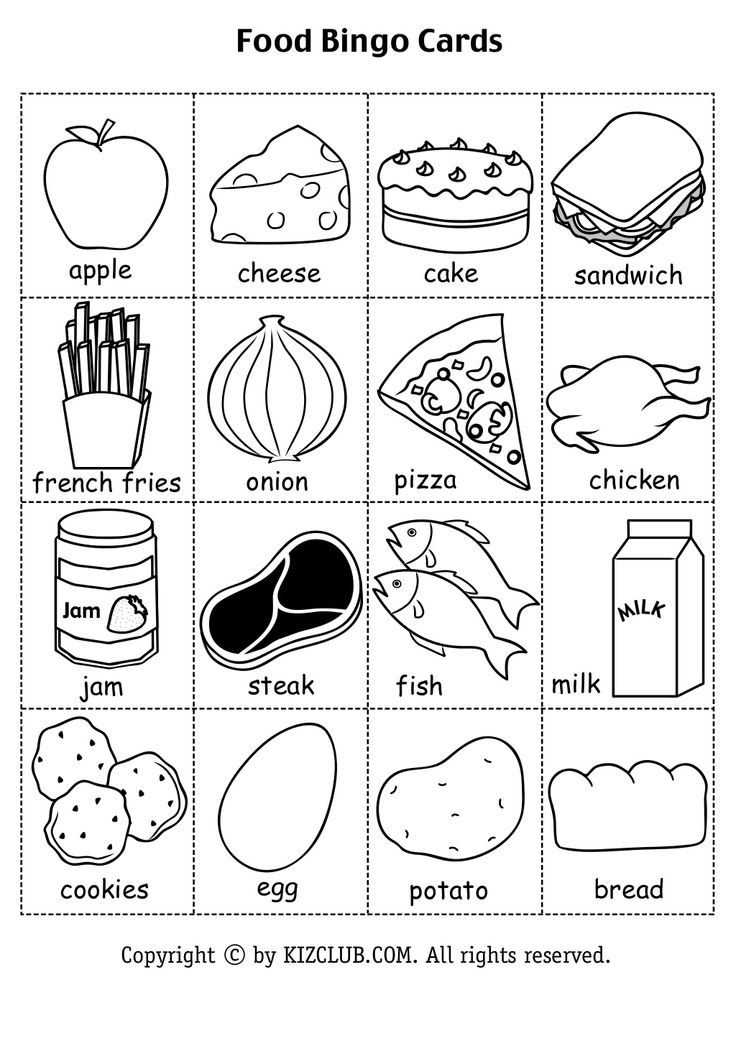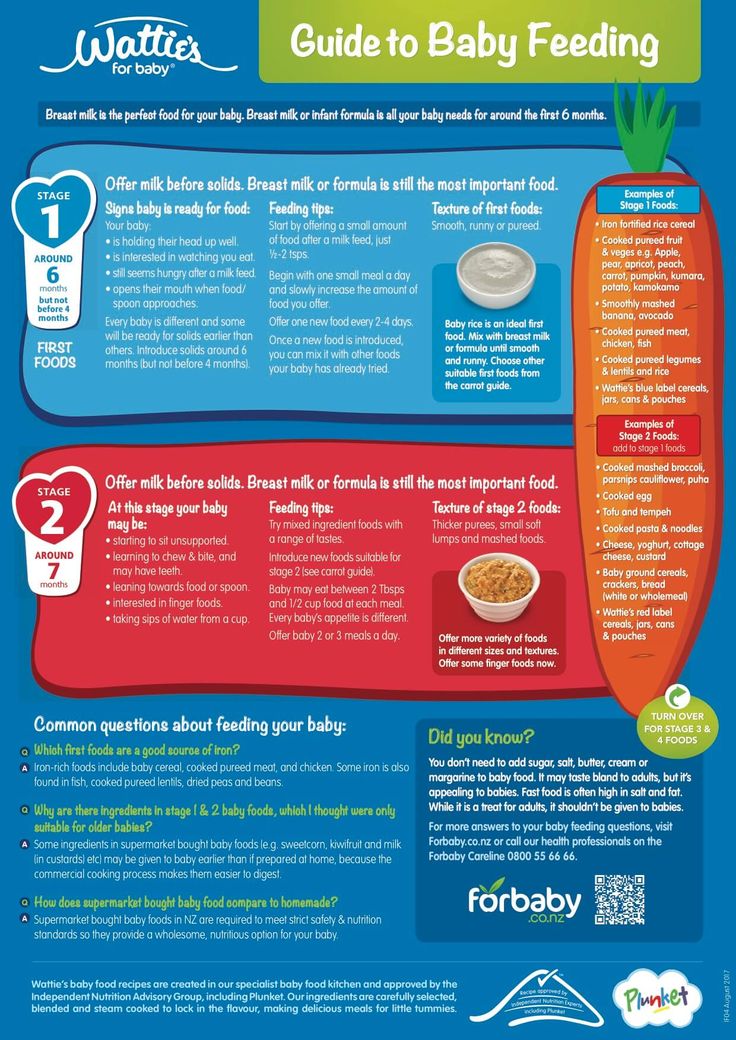Feeding baby peacock bass
Types of Food for Peacock Bass
By Naomi Millburni Jupiterimages/Comstock/Getty Images
Peacock bass are genus Cichla fish who hail from South America. Their moniker is a tribute to the gold and black spots situated on their tails, which are reminiscent of the eyelike displays on the showy birds' tails. Peacock bass are common focuses in the sport fishing world, but they also occasionally reside in uber-spacious aquarium environments.
Peacock Bass Basic Information
In nature, peacock bass usually inhabit the Amazon River region. In times of ample rain, they frequently set up camp in wet woodlands. In arid times, however, they frequently live in lagoons. Since peacock bass grow to such massive sizes, they aren't the easiest aquarium fish to maintain. The butterfly peacock bass (Cichla ocellaris), for one specific example, routinely grows to lengths of moer than 2 feet. Despite that, some peacock bass can be as diminutive as a mere 2 pounds. Some can even get to about 35 inches. Tank mates for peacock bass should not be taken lightly, as they readily consume fish tiny enough to place into their mouths.
Eating in the Wild
Out in nature, peacock bass are especially hardy and sturdy creatures. They usually have zero qualms about going after prey animals even bigger than they are, which makes their dining selection rather broad. For the most part, however, peacock bass eat fellow fish, and only fish. They do occasionally eat other things, as well, though -- think crustaceans.
Types of Food in the Wild
Peacock bass regularly go after tiny fish. Some of the kinds of tiny fish they feed on include bluegill, threadfin shad and mosquito fish, for starters. They sometimes eat other kinds of cichlids. Youngsters frequently eat shrimp. When on the hunt for their next meals, peacock bass often move extremely quickly. It is common for these fish to solely eat in the daytime. At night, they usually rest.
Aquarium Diet
Since peacock bass are piscivores through and through, their aquarium diet calls for plenty of fish. Specimens bred in captivity usually do well on fish that is cut. However, peacock bass taken from the wild typically prefer live fish. As they acclimate to life inside of the aquarium, they usually start to accept eating fleshy sustenance such as diced seafood, tubifex worms, bloodworms and earthworms. Some seafood options for these cichlids are squid, mussels, shrimp, krill and clams. Commercial pellets make nutritious additions to peacock bass feeding plans. They generally thrive when offered small portions of food at frequent intervals.
Specimens bred in captivity usually do well on fish that is cut. However, peacock bass taken from the wild typically prefer live fish. As they acclimate to life inside of the aquarium, they usually start to accept eating fleshy sustenance such as diced seafood, tubifex worms, bloodworms and earthworms. Some seafood options for these cichlids are squid, mussels, shrimp, krill and clams. Commercial pellets make nutritious additions to peacock bass feeding plans. They generally thrive when offered small portions of food at frequent intervals.
Bait
As much adored game fish, peacock bass go for many different types of bait, notably artificial ones. Some examples of bait commonly used on peacock bass are spoons, crank baits, diving lures and rapalas.
References
- FishChannel.com: Cichlids of the Americas - Peacock Basses
- Tampa Bay Estuary Program: Peacock Bass
- Tropical Fish Magazine: Experiences With Cichla Temensis
- FishBase.
 com: Cichla ocellaris
com: Cichla ocellaris - USGS: Cichla ocellaris
- Global Invasive Species Database: Cichla ocellaris
- Florida Fish and Wildlife Conservation Commission: Butterfly Peacock
- FishBase: Cichla temensis
Photo Credits
What To Feed Your Baby Peacock Bass – Useful Tips – TheEcoBaby
If you are wondering what to feed your baby peacock bass, read on for some useful tips. As with most fish, baby peacock bass should be fed a diet that is high in protein and low in fat. A good quality commercial fish food or live food such as brine shrimp or daphnia should form the basis of their diet. It is important to remember that baby fish are very delicate and need to be fed small amounts of food several times a day. Overfeeding can be fatal, so take care not to overdo it. As they grow, you can gradually increase the size and frequency of their meals. Adult peacock bass should be fed once or twice a day with a diet that consists of 50% protein and 50% vegetables. If you have any questions about what to feed your baby peacock bass, talk to your local fish store or veterinarian for more advice.
If you have any questions about what to feed your baby peacock bass, talk to your local fish store or veterinarian for more advice.
I’ve seen tiny creatures consume blackworms and feeder fish for six to seven days. It ensures that growth is sustained at a rapid pace. This recipe can also be combined with tilapia, feeders, krill, and blackworms. If they take feeders, it should be simple to get them to eat other frozen food. Feeding a pbass live is the most convenient method. If you want to fine-tune and fine-tune your skills on acclimating pbass to pellets and/or prepared foods, I recommend doing so. Feed it to your tilapia, feeder, krill, or blackworms, and you’ll be good to go. You’ll have no trouble getting them to eat other frozen foods.
The peacock bass is a voracious animal that eats a lot. As juveniles, these monstrous creatures will wait for food until it is available. The fish should be fed a small amount of food each day. When the fish have become fully grown, they can eat one or two large meals per day.
When a baby bass is two inches long, it is commonly referred to as ‘frying.’ It consumes mostly insects, plankton, and small crustaceans. Because bass eat anything, regardless of size, they can eat anything they want as long as it fits in their mouths. Adult bass, like any other carnivorous animal, will eat anything in front of them, but not plants.
How Do You Take Care Of A Baby Peacock Bass?
Image taken by: aquariumworlds.comWater conditions are in good condition. Peacock Bass thrive in large spaces as long as there is enough room for them to grow. It’s best to supply them with Amazon conditions, which can be soft, acidic water, but they’ll tolerate even neutral conditions and even slightly alkaline ones.
A peacock bass is a large, predatory cichlid that is known for its mean, predatory look and predatory instincts. If you want this creature to stay comfortable, a large tank is required for its enormous size and ability to grow. It is not particularly difficult to care for this species, but finding the right tank can be difficult. When the Peacock Bass is a cichlid, its temperature should be between 76 and 85 degrees Fahrenheit. Warm waters will help the animal grow and improve its digestive system, thereby lowering the chances of digestive complications. An animal like this is a massive predator whose diet consists solely of meat. The presence of ammonia and nitrites will increase if the water is not maintained and changed on a regular basis.
It is not particularly difficult to care for this species, but finding the right tank can be difficult. When the Peacock Bass is a cichlid, its temperature should be between 76 and 85 degrees Fahrenheit. Warm waters will help the animal grow and improve its digestive system, thereby lowering the chances of digestive complications. An animal like this is a massive predator whose diet consists solely of meat. The presence of ammonia and nitrites will increase if the water is not maintained and changed on a regular basis.
Despite its carnivorous diet, the Peacock Bass is not hostile to plants; however, it can cause them to fall through the sheer size of its wings and swim through it in search of food. When they’re hungry, they’ll frequently dart through the tank, especially if they’re massive and powerful. If you want to effectively handle all that water, you may need to invest in tanks with powerful pumps. Peacock Bass should only be fed live food, such as bloodworms, krill, shrimp, or anything containing animal protein, as advised by me. Feeder minnows and guppies are ideal for the feeder because of their rapid growth rate and prolific breeding. If you buy feeder fish from a store, you may come across parasites and diseases that can harm your Peacocks. Adult Speckled Peacock Bass can grow to be 30 inches in length and weigh around 30 pounds.
Feeder minnows and guppies are ideal for the feeder because of their rapid growth rate and prolific breeding. If you buy feeder fish from a store, you may come across parasites and diseases that can harm your Peacocks. Adult Speckled Peacock Bass can grow to be 30 inches in length and weigh around 30 pounds.
A fish of this type requires a lot of space, most likely with an area of more than 400 gallons. Cichlids are aggressive creatures, which is why they have that trait. This tank fish has the most powerful and meanest body of any fish. These apex predators live in the wild and are known as tank predators, just like they are in the wild. Consider their tank mates carefully because this cichlid will eat anything small enough to fit into its esophagus.
A peacock jig’s colors can help you identify a peacock bass species. In most water conditions, the red and yellow peacock pattern is a good choice for beginners. A red-white peacock rattle jig is our second most popular pattern, and it works particularly well when targeting Speckled peacock bass. Each peacock bass species has its own distinct color pattern, and they can be found in a variety of sizes and shapes. If you want to catch peacock bass, make sure to choose the right jig color for the water in which you’re fishing.
Each peacock bass species has its own distinct color pattern, and they can be found in a variety of sizes and shapes. If you want to catch peacock bass, make sure to choose the right jig color for the water in which you’re fishing.
Keeping Your Peacock Bass Healthy
Here are some guidelines to help you keep peacock bass healthy now that you know how to properly care for them. The first thing you should do is make sure there is enough space for the fish. They are one of the most active fish in the tank, and they are boisterous and lively. The second thing to do is to ensure that the temperature of the water is compatible with the peacock bass’ genetic tolerance. Finally, be aware that peacock bass prefer live fish as they are typically raised in the wild and fed a diet consisting of cut fish.
How Quickly Do Peacock Bass Grow?
Image taken by: catchfloridapeacockbass.comThe babies begin to grow rapidly to 12-14 inches in the first 16-18 months, then gradually increase in length to about 22 inches at that point. A 17-inch fish is approximately three pounds in weight, whereas a 19-inch fish is approximately five pounds in weight.
A 17-inch fish is approximately three pounds in weight, whereas a 19-inch fish is approximately five pounds in weight.
When fed power and plenty of water, you can expect to grow your fish by about one or two pounds per month. My Cichla, for example, had double or even triple the growth rate of live fish as food. A month’s worth of pellets and frozen brine was added to a tank, but not every day; another tank of fish was also fed the same amount of fish every day. The non-live diet tank grew by two inches per inch in the last week. A daily feed of live worm boosted the live worm-fed fish to 4 in the time it took for the live fish in the other day tank to grow to 5. The growth rates of occidental, monoclei, and monoclei are quite similar.
Because freshwater bass have a difficult time recovering in warm weather, it is critical to allow them enough time to float outside to give themselves a chance at survival. If you are fishing in warm weather, bring along a cooler full of ice and cold water to assist your bass in conserving energy.
What’s The Best Food For Your Peacock Bass?
There are no single guidelines when it comes to deciding what to feed peacock bass. Cut fish bred in captivity are more likely to perform well in aquariums. However, peacock bass caught in the wild are frequently more fond of live fish. During the first few days after their arrival in the aquarium, they are usually able to digest diced seafood, tubifex worms, bloodworms, and earthworms. The butterfly peacock bass, on average, lives between 6 and 10 years. A cichlid can reach a maximum weight of 13 kg (29 lbs) and a length of 1 m (3.3 ft) with some individuals exceeding this limit. Spawnings are likely to occur between the ages of 20 and 30, or twice a month or once every two months, depending on the couple’s condition.
Can Peacock Bass Live In Cold Water?
Image taken by: opticsandoutdoors.comThe popular peacock bass had a spectacular collapse in some waterways. Peacocks are native to tropical fresh waters in South America, which causes them to have a genetic resistance to cold. They will not tolerate a sustained period of water temperatures below 66 degrees Fahrenheit.
They will not tolerate a sustained period of water temperatures below 66 degrees Fahrenheit.
According to reports, peacock bass appear to be thriving in Miami-Dade County despite the recent cold snap. A peacock population was stocked in canals where the water temperature hovered around 60 degrees. Fish die if the water temperature falls below 60 degrees Celsius. In the last month, the water temperature has been too cold, resulting in the deaths of the majority of these fish. Captain Eric Harrison with his brother, Captain Eric Harrison. Steven Harrison caught and released an estimated 50-pound sailfish on Sunday. Art Sacco, Ken Rymut, and Kirk Kastner caught a 10-pound, 5-ounce fish to win the monthly Bass-Holes club tournament. The club meets the third Thursday of the month at 7 p.m. at the Library.
If you want to catch more bass, you should mimic their behavior. Fish in the same area at the same time of day, in the same way. Warm, tropical temperatures are required for peacocks to thrive.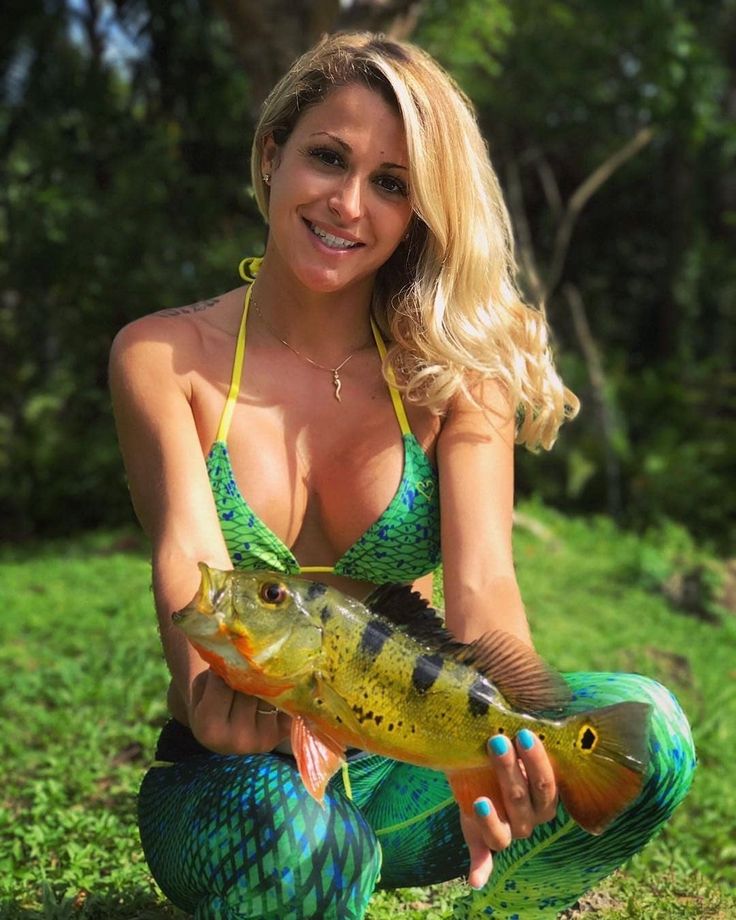 During the winter, shad and minnows are among the fish that bass consume. The only difference is that they consume less of the same thing all year.
During the winter, shad and minnows are among the fish that bass consume. The only difference is that they consume less of the same thing all year.
What’s The Ideal Water Temperature For Peacock Bass?
When the water temperature is between 55 and 85 degrees Fahrenheit, peacock bass will survive in cold water. When the temperature falls below 60 degrees Fahrenheit, the growth rate of the fish slows, raising the risk of disease. The fish prefers temperatures ranging from 80 F to 86 F.
Peacock Bass Feeding
Peacock bass are voracious feeders, and will consume a wide variety of prey items. Their diet includes small fish, crustaceans, insects, and other aquatic invertebrates. Peacock bass are opportunistic feeders, and will strike at whatever is available. They are most active during the daytime, and will often congregate around areas of high food abundance.
They are known as peacock bass in tropical South America, but they have spread to other parts of the world.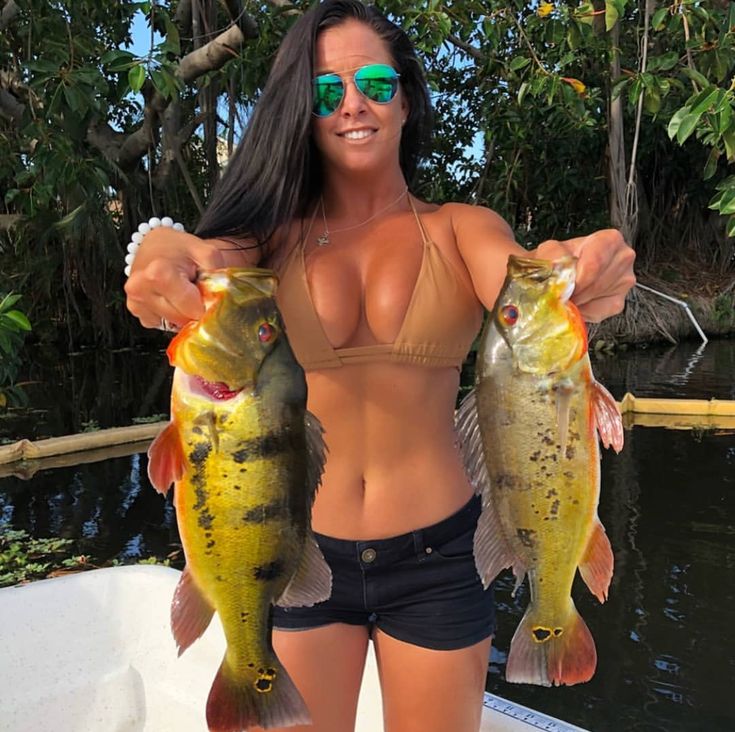 Adult sizes can differ significantly depending on sex and species. In size, the largest peacock bass can reach 3 feet in length and 30 pounds in weight. The peacock bass is a large predator with a powerful appetite. Choosing the correct species can result in a different aquarium size than what you require, such as a 75-gallon tank or a 500-gallon aquarium. If you provide a warm, dry place in which peacock bass thrive, you will be able to keep them hardy and undemanding. When temperatures are higher, such as 80 to 86F, it is more important to keep the body warm.
Adult sizes can differ significantly depending on sex and species. In size, the largest peacock bass can reach 3 feet in length and 30 pounds in weight. The peacock bass is a large predator with a powerful appetite. Choosing the correct species can result in a different aquarium size than what you require, such as a 75-gallon tank or a 500-gallon aquarium. If you provide a warm, dry place in which peacock bass thrive, you will be able to keep them hardy and undemanding. When temperatures are higher, such as 80 to 86F, it is more important to keep the body warm.
The lion of the aquatic world eats anything that can fit inside its enormous mouth. Choose fish that have been raised with them or fish that are slimmer, such as Bichirs or Spiny Eels. In the wild, the Peacock Bass’ diet is mostly comprised of smaller fish. When they are ready to spawn, Peacock Bass sexing becomes almost impossible. Warm temperatures, clean water, plenty of space, and plenty of food are just a few of the factors that help them breed. If you want to get them, you should raise them in small groups. To spawn, your Peacock Bass must be able to survive in a tank larger than your bare chest. To lay their eggs, they must use flat rocks and other places. As you grow them, you can introduce brine shrimp, blood worms, and guppies into their diet.
If you want to get them, you should raise them in small groups. To spawn, your Peacock Bass must be able to survive in a tank larger than your bare chest. To lay their eggs, they must use flat rocks and other places. As you grow them, you can introduce brine shrimp, blood worms, and guppies into their diet.
Peacock Bass Reproduction
The Spotted Peacock Bass spawning season runs from April to September, but it peaks in May and June. South American peacock spawning is typically not observed until months after Florida peacock spawning begins. Spawning is usually seen when the water temperature falls between 78F and 82F (25C to 28C).
From April to September, the Spotted Peacock Bass spawning season begins, with the peak of the season in May and June. Females lay between 4,000 and 10,000 eggs per season. Spawning occurs when the water temperature falls between 78F and 82F (25C to 28C). Bass Fishing Gurus, a website devoted to providing anglers with the information they require to enjoy their fishing experience, aims to provide anglers with the tools and resources they require. Despite being a variant of the Speckled Peacock Bass family (Cichla temensis), many people are perplexed by the spotted bass’s dedicated section.
Despite being a variant of the Speckled Peacock Bass family (Cichla temensis), many people are perplexed by the spotted bass’s dedicated section.
Peacock Bass Fishing Tours | Tour selection
Peacock or long-finned perch (English Peacock Bass, Brat. Tucunare). There are about 15 varieties of this large and very active freshwater predatory fish. The coloration of all peacock bass is very variable, but the following common features for peacock bass can be identified: the main body color is yellow-green with yellowish spots. The body is crossed by three weakly pronounced dark stripes, which look like spots in large specimens. There is also a characteristic dark spot of a rounded shape in the upper part of the base of the caudal fin. In the shape of the body, a characteristic outgrowth in the head region is strongly distinguished.
Giant peacock perch is the largest of the entire family that lives in South America in the Amazon and Orinoco river basins.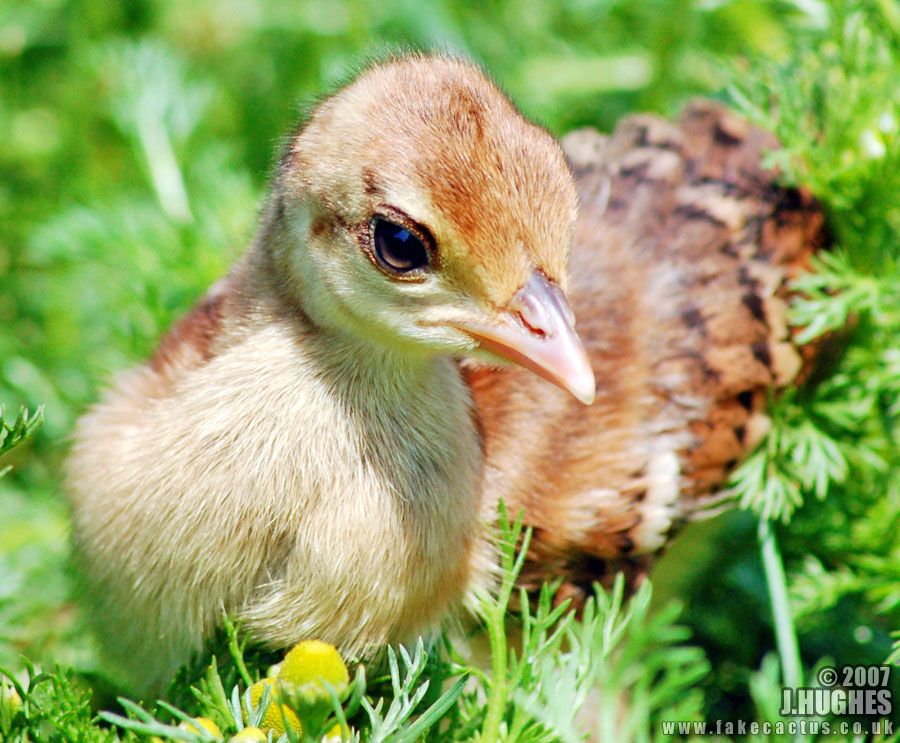 It is also called spotted bass. World record according to IGFA: - 13 kilograms.
It is also called spotted bass. World record according to IGFA: - 13 kilograms.
Butterfly Peacock Bass - the smallest, usually not exceeding 3 kg.
Orinoco Peacock Bass. The whole body is bright golden in color and shimmery, and on the sides there are three spots of golden leopard color on a black background. The upper and tail fins give a bluish tint. World record according to IGFA: - 7 kilograms.
Distribution area: Peacock perch lives in rivers flowing in Brazil, Peru, Colombia, Venezuela. Fish prefer to stick to places with a weak current and rocky shores heavily overgrown with aquatic vegetation, as well as in places with flooded trees. Adults stay alone or in pairs, while juveniles stay in small groups.
The giant peacock bass lives in the Amazon and Orinoco river basins.
King peacock bass is found only in the Orinoco River in Venezuela.
Butterfly peacock perch lives in Venezuela, Colombia and Brazil.
Orinoco peacock perch is common in the Amazon and Rio Negro in Brazil, and it also lives in the Orinoco in Venezuela and Colombia.
The most desired trophy for anglers is the giant peacock bass - a very serious and aggressive opponent. This is one of the most interesting trophies in sport fishing!
Fishing methods: fly-fishing or spinning.
Fly Fishing : The rule of thumb in clear, clean water is fast and aggressive stripping. On the other hand, if the water is cloudy, you should slow down the wiring and use the brightest baits.
Tackle: Grade 9-10 Saltwater Fly Rods, 9ft, Fast Action, Multi-Knee for Easy Transportation (Recommended Models WinstonBIIX, SageRPLXI-II, SageXI2, G.LoomisCrossCurrent, ScottSoltwaterHeliply. Sinking Lines, Hooks #1 - 5/0. Saltwater reels with a good braking system, with enough backing space (minimum 150 yards high visibility backing, 30 lb) Recommended models: Tibor, Abel, GalvinTorqueSeries, RossCanyon 4 or 5, Sage Recommended between line and lure 6ft 40 -50 mono or Fluorocarbon leader Use large flies and bright colors Green/yellow/red or blue/white/red combinations work very well
Spinning. Two-handed casting or spinning rods of medium or fast action with a test of 30-90g are recommended for catching big fish. It is necessary to have at least two rods and two reels, as the probability of spinning breakage and gear failure in the reel is very high. It is for this reason that most anglers use casting rods instead of spinning rods. In addition, multiplier reels allow a more accurate and farther presentation in relation to spinning reels. Red/yellow and pearly/olive poppers work well. The traditional tactic is to start with a bait that works in the upper layer of the water. If the fish refuses the offered bait, it is recommended to use lures that work in the water column. If the water is clear, it is recommended to use baits without a sound chamber. We recommend transparent monofilament lines 30 lb., braided lines - 50 pound. Carabiners, swivels, rings - 60 lb or more. Triple hooks No. 1,2,4,6, 1/0, 2/0.
Two-handed casting or spinning rods of medium or fast action with a test of 30-90g are recommended for catching big fish. It is necessary to have at least two rods and two reels, as the probability of spinning breakage and gear failure in the reel is very high. It is for this reason that most anglers use casting rods instead of spinning rods. In addition, multiplier reels allow a more accurate and farther presentation in relation to spinning reels. Red/yellow and pearly/olive poppers work well. The traditional tactic is to start with a bait that works in the upper layer of the water. If the fish refuses the offered bait, it is recommended to use lures that work in the water column. If the water is clear, it is recommended to use baits without a sound chamber. We recommend transparent monofilament lines 30 lb., braided lines - 50 pound. Carabiners, swivels, rings - 60 lb or more. Triple hooks No. 1,2,4,6, 1/0, 2/0.
Brazil, Guyana, Colombia.
Peacock perch: description, fishing methods, lures
Pavon, peacock pavon, peacock bass - these are not all the names that are used in the Latin American and English-speaking environment for large, brightly colored fish of the cichlid family. Among the Russian-language fishing names, the terms are more often mentioned: peacock perch or butterfly perch. In recent years, aquarists have shown great interest in these fish. In their environment, when describing various subspecies of tropical freshwater perches, Latin terms are more often used. There, peacock perches are named after the name of the family: cichla, cichlid. This is a very varied look. When describing various subspecies, additions are often used, such as: spotted, motley and others. Despite the fact that this fish is quite well known, scientists do not always have a consensus on how to distinguish between numerous forms, subspecies, or divide into separate species. In addition, it is known that throughout life, when conditions change, fish change not only in size, but also in body shape and color, which also complicates classification. Sometimes they mention in the description such terms as: giant, small, and so on.
Among the Russian-language fishing names, the terms are more often mentioned: peacock perch or butterfly perch. In recent years, aquarists have shown great interest in these fish. In their environment, when describing various subspecies of tropical freshwater perches, Latin terms are more often used. There, peacock perches are named after the name of the family: cichla, cichlid. This is a very varied look. When describing various subspecies, additions are often used, such as: spotted, motley and others. Despite the fact that this fish is quite well known, scientists do not always have a consensus on how to distinguish between numerous forms, subspecies, or divide into separate species. In addition, it is known that throughout life, when conditions change, fish change not only in size, but also in body shape and color, which also complicates classification. Sometimes they mention in the description such terms as: giant, small, and so on.
Common features of peacock perch are short body, similar in shape to most perciformes, large head with a large mouth. The dorsal fin has hard rays and is divided by a notch. The body is covered with numerous spots, transverse dark stripes, etc. For the pectoral, ventral fins and the lower half of the caudal, a bright red color is characteristic. It is worth noting that, a common feature of all South American cichlids, is the presence of a dark spot, in a light frame, on the tail of the body. This "protective eye", in different fish, is expressed to a greater or lesser extent. This is probably an element of protective coloration that deters other predators, such as piranhas and others. Peacock fish are characterized by sexual dimorphism. This is expressed in some elements of color, as well as formations in males of the frontal growth. Although some researchers point out that females also have similar growths. The fish prefers to live in slowly flowing sections of the river, among algae and snags, flooded trees and other obstacles. Inhabits areas of the river bottom with sandy or small-pebble soil. At the same time, the fish is very thermophilic, demanding on water quality and oxygen saturation.
The dorsal fin has hard rays and is divided by a notch. The body is covered with numerous spots, transverse dark stripes, etc. For the pectoral, ventral fins and the lower half of the caudal, a bright red color is characteristic. It is worth noting that, a common feature of all South American cichlids, is the presence of a dark spot, in a light frame, on the tail of the body. This "protective eye", in different fish, is expressed to a greater or lesser extent. This is probably an element of protective coloration that deters other predators, such as piranhas and others. Peacock fish are characterized by sexual dimorphism. This is expressed in some elements of color, as well as formations in males of the frontal growth. Although some researchers point out that females also have similar growths. The fish prefers to live in slowly flowing sections of the river, among algae and snags, flooded trees and other obstacles. Inhabits areas of the river bottom with sandy or small-pebble soil. At the same time, the fish is very thermophilic, demanding on water quality and oxygen saturation. In the case of anthropogenic impact on a water body, for example, during the organization of reservoirs, the population is sharply reduced. One of the reasons is that peacocks do not compete well with new, introduced species. But at the same time, the fish acclimatized, after artificial relocation, in the reservoirs of South Florida. Currently, there is no threat of extinction of the species, but some small populations are still endangered. Juveniles often form small clusters, larger ones live in pairs. The size of the fish can reach about 1 m in length and 12 kg in weight. Pavona feeds not only on fish, but also on various crustaceans and other invertebrates, including those falling to the surface. Large individuals attack birds and terrestrial animals that have fallen into the water. The fish prefers ambush hunting methods, but at the same time, it actively moves in all water layers.
In the case of anthropogenic impact on a water body, for example, during the organization of reservoirs, the population is sharply reduced. One of the reasons is that peacocks do not compete well with new, introduced species. But at the same time, the fish acclimatized, after artificial relocation, in the reservoirs of South Florida. Currently, there is no threat of extinction of the species, but some small populations are still endangered. Juveniles often form small clusters, larger ones live in pairs. The size of the fish can reach about 1 m in length and 12 kg in weight. Pavona feeds not only on fish, but also on various crustaceans and other invertebrates, including those falling to the surface. Large individuals attack birds and terrestrial animals that have fallen into the water. The fish prefers ambush hunting methods, but at the same time, it actively moves in all water layers.
Ways of catching fish
This fish is most popular thanks to sport fishing. Fish is of particular importance to local fishermen. The most important point in fishing for pavons is to find the habitats of the fish. In recreational fishing, spinning and fly fishing gear are commonly used. The popularity of this type of ichthyofauna among tropical fishing enthusiasts lies not only in the inaccessibility of the places where it lives, but also in the aggressiveness of the fish itself when attacking. At the same time, peacock perches can be very cautious and finicky, they are very active when hooking and often go off the hooks. Another attractive point when hunting these fish is the large number of baits to which the fish react, including from the surface of the water.
The most important point in fishing for pavons is to find the habitats of the fish. In recreational fishing, spinning and fly fishing gear are commonly used. The popularity of this type of ichthyofauna among tropical fishing enthusiasts lies not only in the inaccessibility of the places where it lives, but also in the aggressiveness of the fish itself when attacking. At the same time, peacock perches can be very cautious and finicky, they are very active when hooking and often go off the hooks. Another attractive point when hunting these fish is the large number of baits to which the fish react, including from the surface of the water.
Spinning fishing
The determining factor in the choice of spinning tackle is the fishing conditions on the rivers in the rainforest. In most cases, fishing takes place from boats, large and voluminous imitations of hunting objects serve as bait. Fishing conditions may require long-range, accurate casts at numerous obstacles - flooded forests, snags, overhanging trees, and more.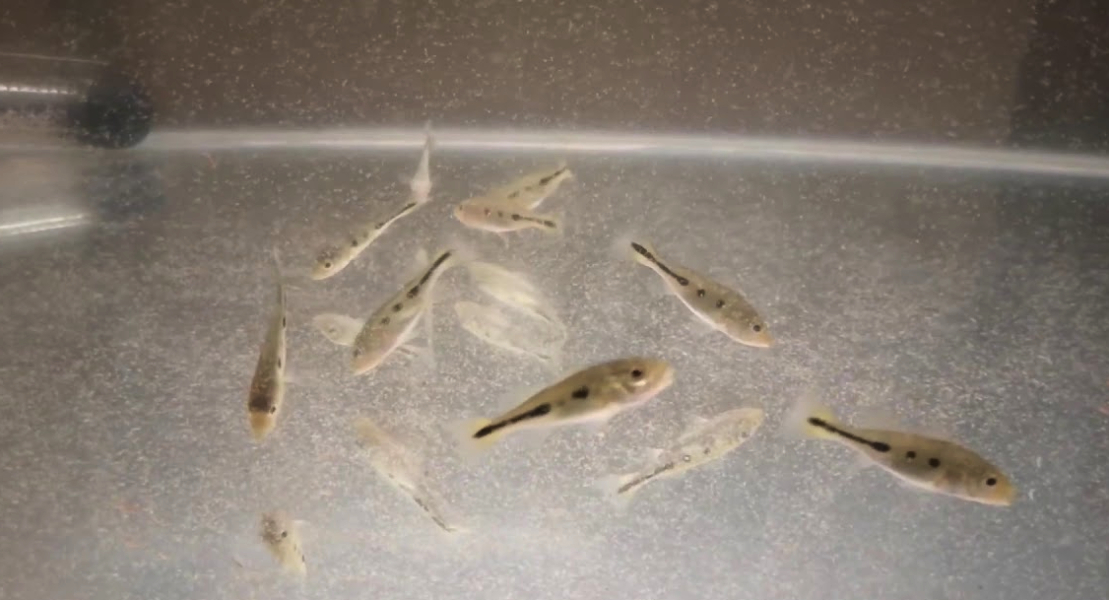 Including, forced hauling and hard, clear sweeps are often necessary. Most experts advise using fast, medium fast rods. Currently, a large number of specialized versions of forms are being produced for various animations of lures, including surface ones. Therefore, the right of choice remains with the angler, taking into account his experience. Fishing, in the conditions of a tropical river, does not make it possible to localize only on one type of fish, so the tackle should rather be universal, but with a large “strength factor”. This applies primarily to the used fishing lines, cords, leashes and various accessories. Reels must have a trouble-free braking system, modification options may be different and depend on the passions and experience of the fisherman. Do not forget that peacock bass trophies can be quite large.
Including, forced hauling and hard, clear sweeps are often necessary. Most experts advise using fast, medium fast rods. Currently, a large number of specialized versions of forms are being produced for various animations of lures, including surface ones. Therefore, the right of choice remains with the angler, taking into account his experience. Fishing, in the conditions of a tropical river, does not make it possible to localize only on one type of fish, so the tackle should rather be universal, but with a large “strength factor”. This applies primarily to the used fishing lines, cords, leashes and various accessories. Reels must have a trouble-free braking system, modification options may be different and depend on the passions and experience of the fisherman. Do not forget that peacock bass trophies can be quite large.
Fly fishing
Fishing for tropical freshwater fish is becoming increasingly popular with the fly fishing community. Fishing is quite different and requires additional skills, even for fly-fishers who have experience in catching salmon predators and other difficult waters. Approaches in choosing gear are similar, as for spinning players. First of all, these are the reliability of the reels, a large amount of backing and powerful one-handed rods of high classes. Pawon, among fishermen, has a reputation as a "freshwater bully" who breaks tackle and "brutally" destroys baits. Before the trip, it is necessary to clarify which baits are best used in a given region, in a particular season.
Approaches in choosing gear are similar, as for spinning players. First of all, these are the reliability of the reels, a large amount of backing and powerful one-handed rods of high classes. Pawon, among fishermen, has a reputation as a "freshwater bully" who breaks tackle and "brutally" destroys baits. Before the trip, it is necessary to clarify which baits are best used in a given region, in a particular season.
Lures
The choice of spinning lures primarily depends on the experience of the fisherman. Fish react to most baits produced, but reliability is an important point. The probability of catching fish on silicone baits is quite high, but whether it will remain intact after biting is a big question. In addition, it is important to understand that due to the large number of competitive fish species, with baits made of fragile materials, only changing nozzles may not wait for the capture of the coveted trophy. The same applies to fly fishing, the streamers used when fishing for butterfly bass must be very strong, with strong hooks and in sufficient quantity.

